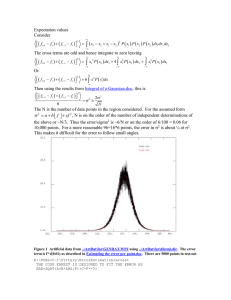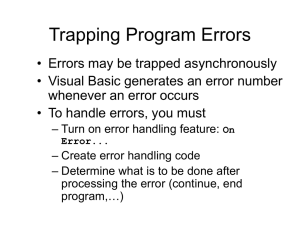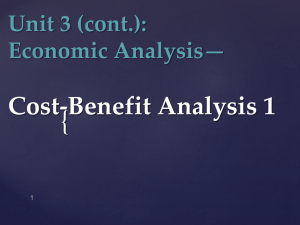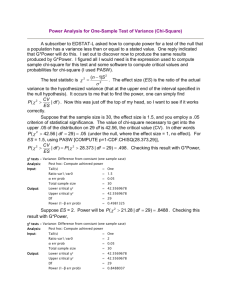annex-publicsector
advertisement
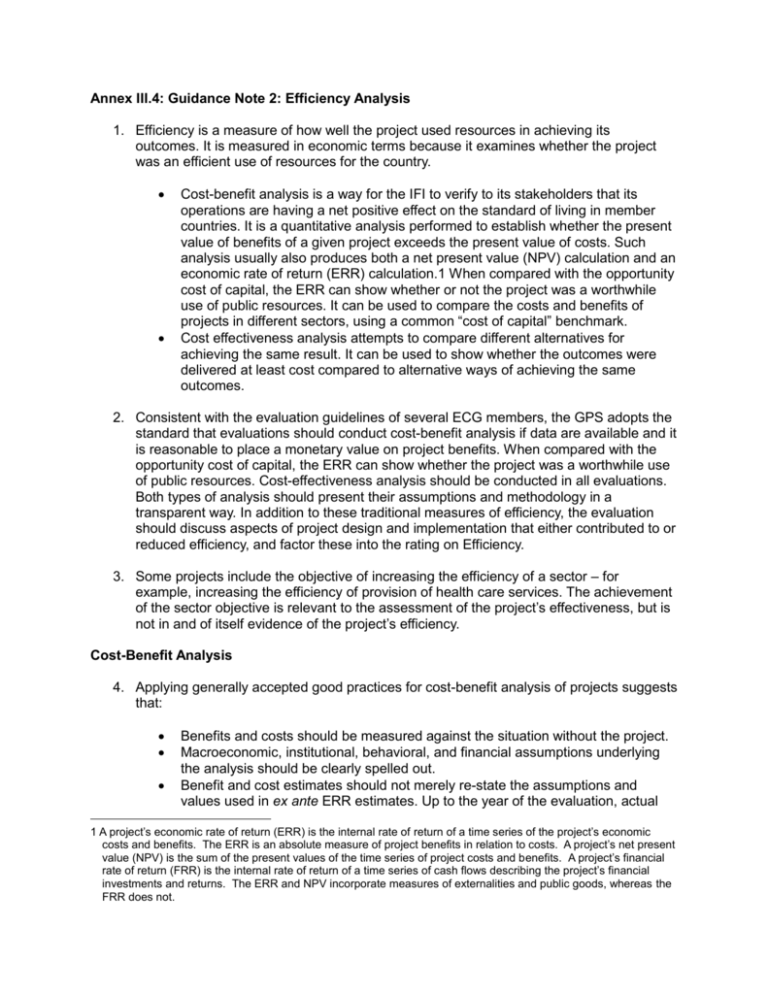
Annex III.4: Guidance Note 2: Efficiency Analysis 1. Efficiency is a measure of how well the project used resources in achieving its outcomes. It is measured in economic terms because it examines whether the project was an efficient use of resources for the country. Cost-benefit analysis is a way for the IFI to verify to its stakeholders that its operations are having a net positive effect on the standard of living in member countries. It is a quantitative analysis performed to establish whether the present value of benefits of a given project exceeds the present value of costs. Such analysis usually also produces both a net present value (NPV) calculation and an economic rate of return (ERR) calculation.1 When compared with the opportunity cost of capital, the ERR can show whether or not the project was a worthwhile use of public resources. It can be used to compare the costs and benefits of projects in different sectors, using a common “cost of capital” benchmark. Cost effectiveness analysis attempts to compare different alternatives for achieving the same result. It can be used to show whether the outcomes were delivered at least cost compared to alternative ways of achieving the same outcomes. 2. Consistent with the evaluation guidelines of several ECG members, the GPS adopts the standard that evaluations should conduct cost-benefit analysis if data are available and it is reasonable to place a monetary value on project benefits. When compared with the opportunity cost of capital, the ERR can show whether the project was a worthwhile use of public resources. Cost-effectiveness analysis should be conducted in all evaluations. Both types of analysis should present their assumptions and methodology in a transparent way. In addition to these traditional measures of efficiency, the evaluation should discuss aspects of project design and implementation that either contributed to or reduced efficiency, and factor these into the rating on Efficiency. 3. Some projects include the objective of increasing the efficiency of a sector – for example, increasing the efficiency of provision of health care services. The achievement of the sector objective is relevant to the assessment of the project’s effectiveness, but is not in and of itself evidence of the project’s efficiency. Cost-Benefit Analysis 4. Applying generally accepted good practices for cost-benefit analysis of projects suggests that: Benefits and costs should be measured against the situation without the project. Macroeconomic, institutional, behavioral, and financial assumptions underlying the analysis should be clearly spelled out. Benefit and cost estimates should not merely re-state the assumptions and values used in ex ante ERR estimates. Up to the year of the evaluation, actual 1 A project’s economic rate of return (ERR) is the internal rate of return of a time series of the project’s economic costs and benefits. The ERR is an absolute measure of project benefits in relation to costs. A project’s net present value (NPV) is the sum of the present values of the time series of project costs and benefits. A project’s financial rate of return (FRR) is the internal rate of return of a time series of cash flows describing the project’s financial investments and returns. The ERR and NPV incorporate measures of externalities and public goods, whereas the FRR does not. costs and benefits should be used, while new projections should be made for the remaining useful life of the project. The assumptions underlying projected costs and benefits should be based on the lessons of experience with the country, the sector, and the Borrower. Sensitivity tests on ERRs based on possible changes in key assumptions should be carried out as part of the evaluation. These assumptions reflect any concerns raised in the assessment of Sustainability – for example, increases in key prices, operation and maintenance expenditures being less than assumed at appraisal, or changes in government policies. The analysis should take into account any domestic or cross-border externalities. 5. Ex post ERRs should be compared with ex ante appraisal estimates. The evaluation should indicate the components and the percentage of total project costs covered by the analysis, noting any differences from the analysis at appraisal. Cost-Effectiveness Analysis 6. Cost-effectiveness analysis asks whether the project achieved its outcomes at least cost compared to alternative ways of achieving the same outcomes. The analysis can use either the cost per unit of input or cost per unit of output. Whether benefits are measured in monetary or other terms, flows should be adjusted to reflect real use of resources. When distortions are considerable, values should be adjusted to reflect social opportunity costs. Cost per beneficiary is often used in sectors such as education, health, and urban development. 7. Comparators for cost-effectiveness analysis may be drawn from similar projects in the same country implemented by the Government or other development partners; from similar projects in other countries; or from other local, national, or regional benchmarks. Implementation Costs 8. The evaluation of Efficiency also should include aspects related to the project’s design and implementation that either contributed to or reduced efficiency. Implementation delays in and of themselves may not necessarily reduce efficiency if they have an equal impact on discounted costs and benefits. However, additional administrative costs that arise from delays and extensions of closing dates would have a negative impact on efficiency.
